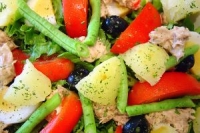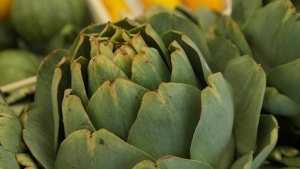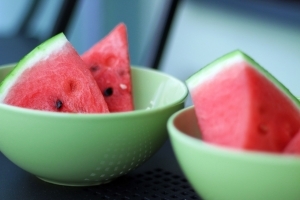Kumara, sauerkraut and mushroom pierogi
Kumara, sauerkraut and mushroom pierogi (makes about 50pcs)

Kumara, sauerkraut and mushroom pierogi Photo: Supplied \ Michael Easton
Ingredients
350g red kumara
150g mushrooms
170g sauerkraut (I’ve used Living Goodness)
12g finely chopped garlic (5-6 cloves)
10g chopped fresh dill (about 2 Tbsp fresh or 1/2 Tbsp dried dill)
2.5 Tbsp olive oil (divided)
3/4 tsp salt (divided)
1/4 tsp black pepper
1/4 tsp white pepper
1 pack (usually 50 pcs) dumpling wrappers - wheat flour
Method
1. Cut the kumara into 5-7mm cubes and place in a pot with around 2 cups of water. Add 1/4 tsp of salt and boil until they are soft but not disintegrated. Al dente is fine. Remove from heat, drain and allow to cool.
2. Chop mushrooms into 5-10mm pieces. Heat 2 tbsp of olive oil in a pan and add 1/4 tsp of salt and finely chopped garlic for a couple of minutes until it starts to change colour. Then add mushrooms and cook for another 5 minutes until soft. Use a reasonably low heat as you want to sweat the garlic and mushrooms rather than fry them.
3. Mix mushrooms and garlic into cooked kumara and allow to cool.
4. Once cooled add the chopped dill, sauerkraut, 1/4 tsp of salt, black & white pepper and 1/2 tbsp of olive oil. Lightly chop sauerkraut before adding to shorten any long lengths of cabbage.
5. Use a teaspoon to place around 12g of the mixture into the centre of the dumpling wrapper, lightly wet the edge and fold over and press together into a half circle shape. From this point you can get a little fancy and put some pleats in and flatten the base or just leave them as is.
Cooking your dumplings
Place 1 Tbsp of rice bran or olive oil into a frying pan and heat to medium. Add your dumplings and fry until one side is nicely browned. Turn them over and add around 50-70ml of water, turn the heat up to high and put a lid on. Keep a close watch for a few minutes as the water evaporates. When this has happened turn the heat back down to medium and finish frying to your desired level of crunchiness. Frying freshly made dumplings should only take around seven minutes. Steaming them will take around 3 minutes. When cooking from frozen they will take 10-12 minutes.
Toppings
Traditional Polish toppings include fried onions, melted butter, sour cream, cheese, vinegar, onion jam and fresh herbs. Sometimes no toppings are used. For these dumplings we suggest caramelised finely chopped onion, melted butter and fresh dill. Experiment with your favourites.
Storage
These dumplings will keep for 24 hours covered in a fridge or 12 months in the freezer. If storing in the freezer, put in a container and don’t squeeze them too tightly together otherwise they may stick to each other. Don’t thaw dumplings before cooking when they are frozen.
Pastry (very easy but time consuming)
Ingredients
420g plain (standard) flour
Use standard rather than high grade flour as the lower gluten content makes the pastry softer
220g (1 cup) cold water
1/2 tsp salt
Method
Mix together flour and salt in bowl and add water, blending with your hand as it pours in. Knead until a ball of dough forms that’s soft and doesn’t stick to your hands. Add more flour if too sticky or water if too dry.
Knead for a further 5 minutes then cover and let it sit for 15 minutes. Sitting the dough will reduce elasticity and help the dough become soft - this is good.
Break the dough into 4 even-ish pieces and roll long, thin sausages using your hands (about 20mm diameter). Then chop off small 12-14g pieces and flatten with a rolling pin into 80mm wide circles or as close to a circle as you can get.
Alternatively, break the dough into two balls and roll flat to about 1mm thickness then cut out circle shapes using a cookie cutter or cutting around a cup or mug.
Use immediately or store in the fridge for two days with a small piece of baking paper between each pastry to avoid sticking. If using within two hours of making they should sit on top of each other without sticking. Dusting with extra flour can help keep them easy to separate.


